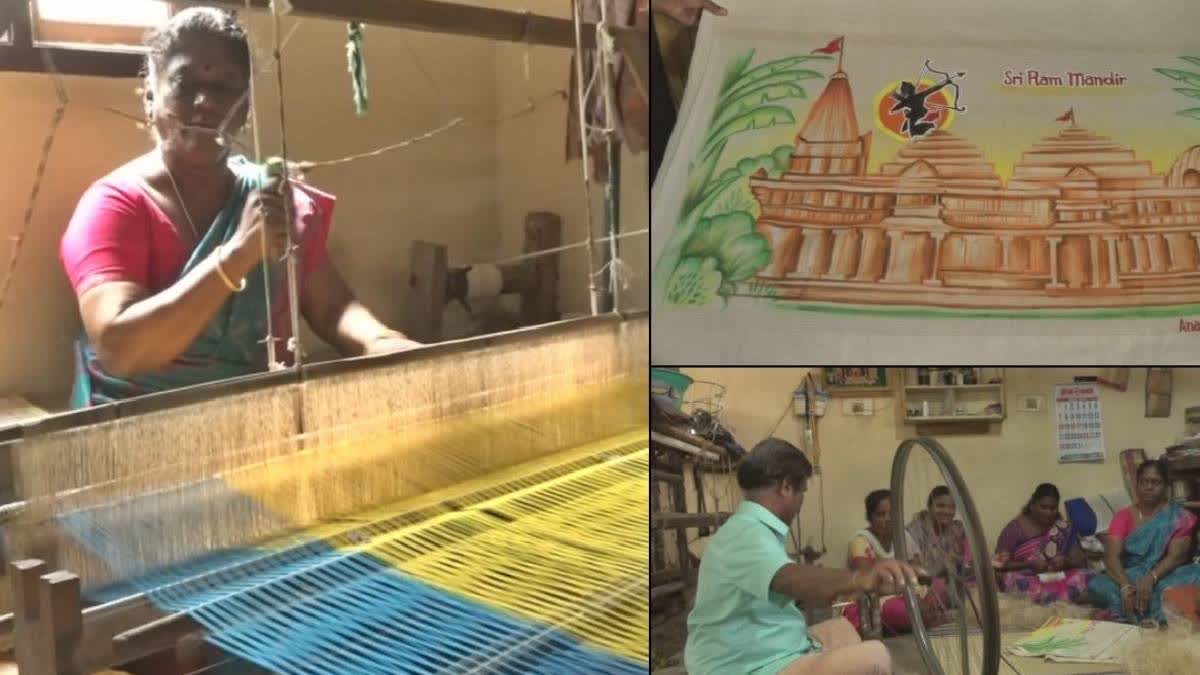Chennai: The Natural Fibre Weaving Group from Tamil Nadu has weaved a saree with natural banana fibres depicting pictures of the Ram Mandir and Ram Lalla holding a bow and arrow.
A group of weavers have flown to Ayodhya from Chennai with the 20-feet-long and four-feet wide banana fibre saree for draping it over Sita's idol in the temple.
Natural Fibre Weaving Group of Anakaputhur in Chengalpattu district is famous for its natural fibre clothing. Sarees are woven with natural fibres and vegetable and fruit peels are used for the colour. For the past 12 years, the organisation is engaged in weaving multi-coloured sarees using natural fibres extracted from bananas, bamboos, cactuses, and pineapples.
The colours are prepared from neem, turmeric, sandalwood, lime, charcoal, fruits, vegetables and barks. These sarees are environment-friendly, safe and offers a cool feeling when draped since no chemicals are used. Also, sarees woven from herbal fibres are said to be a cure for skin diseases and allergies.
The Anakaputhur weavers have received many awards for their natural fibre sarees. The National Banana Research Institute has handed the group many certificates for weaving sarees from banana fibres. It takes about three days to weave a saree from natural fibres. A natural fibre saree costs between Rs 1,200 to Rs 7,500.
Head of the Nattiya Nesav of the Natural Fibre Weaving Group , Shekhar, said that they are the third generation weavers. "Earlier, we used cotton to weave sarees and now various fibres are used. In Ramayana, there is reference of Hanuman presenting a banana saree to Sita. We learned how to make sarees from fibres of banana saplings and wove those manually instead of using machines. We want to place a banana fibre saree before Sita's idol," Shekhar said.
He said that the organisation has been weaving organic sarees using dyes from fruit wastes and fibres from bamboo, banana, coconut and others for the last 12 years.
It took 10 days to weave the banana fibre saree for Sita and the next 15 days were spent in depicting pictures of Ram Mandir and Lord Ram on the saree.
"It is a pleasure for us to weave a saree and present it to Sita. Our Natural Fibre Weaving Group is working very hard. The central and state governments should provide assistance so that we can popularise the technique," Shekhar added.
Read more



